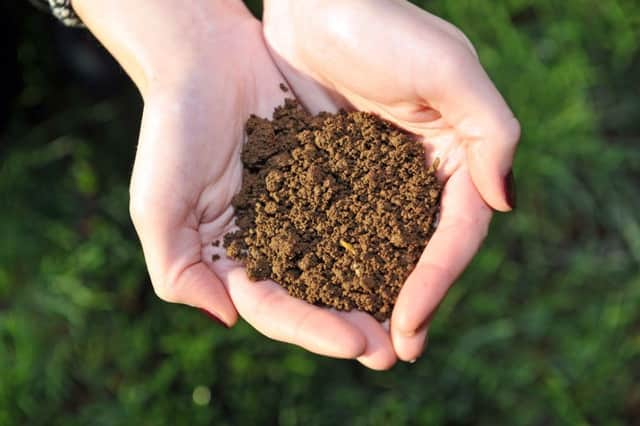Soil provides grounds for revolution


The “green revolution” led to an increase of crop yield at least three times greater than the previous century, and this increase was primarily a result of the introduction of fertilisers, pesticides, and new crop varieties. However while most crop yields are no longer increasing, the world population is still increasing. The FAO estimates the world population will reach almost 10 billion in 2050.
The sustainability of our current fertilisers and pesticides is also declining partly due to the many negative impacts of chemicals in our environment.
Advertisement
Hide AdAdvertisement
Hide AdThus, scientists around the world, including colleagues at the James Hutton Institute in Scotland, are looking for new ways of increasing crop yield and creating a second “green revolution.” By shifting crop breeding targets to promote the beneficial use of soil microbes and managing our agriculture through reduced inputs, we could take a huge step forward to such a new green revolution.
Soils have the ability to partially replace many common agricultural inputs, but only if we understand how soil microbes help crop plants grow and we also maintain soils in a healthy condition for microbes. If well managed, soils can improve nutrient availability, reduce disease incidence, and reduce pest pressures, and thus could, at least partially, replace fertilisers and pesticides. However, these effects strongly depend on how ‘healthy’ our soils are.
The environmental, as well as economic, costs of using chemical inputs that have led to a tightening of regulations for the use of fertilisers and pesticides have increased our need to find alternatives for these inputs. Maintaining a healthy soil community could provide an alternative for some inputs, while reducing certain environmental impacts of food production such as greenhouse gas emission.
To achieve this a number of important steps need to be taken. First, we need to improve our understanding of how soil works and our understanding of how agriculture alters soil. This will allow for better design of management systems, which in turn will promote greater nutrient availability and prime plants with better defense responses when challenged by pests and diseases.
Crop breeding also needs to allow plants to take advantage of the beneficial soil microbes in a healthy soil. New breeding efforts could include simple measures such as an increase in the number and density of roots. Similar to how a farmer cultivates crops, plants use their roots and compounds to ‘cultivate’ the microbes that live around their roots. We can therefore breed crops that cultivate microbial communities, which has a beneficial effect on nutrient availability and plant defence.
However, plants can only cultivate the microbes that are present in the soil, and current agricultural practices also affect soil microbes. Tillage breaks up or redistributes microbes often away from new plant roots. Similarly, adding fertilisers or pesticides or using fields planted with a single crop can also dramatically alter soil microbes. All of these practices can lead to the unnecessary loss of good types of microbes from agricultural soil, and can also result in communities of antagonistic microbes, or damage the environment.
Changing how we grow crops will produce a heathier system and avoid the loss of important microbes. Currently some of these agricultural practices, such as minimum tillage and the use of alternative fertilisers such as composts, are being tested and used on farms.
In addition, most of our crops have been bred under optimal conditions, such as well-tilled soil and high inputs of fertilisers and pesticides. As a result, when compared to wild relatives, crop plants tend to interact poorly with soil microbes without chemicals and tillage, and have a less diverse microbe community around their roots. These crop species will be hindered in the future when fertilisers become rare if crop breeding practices are not changed.
Advertisement
Hide AdAdvertisement
Hide AdWe are now well placed to try and tailor our crop plants to select a beneficial community of microbes to replace some chemical inputs. Together with careful soil management and other scientific advances, crop plants bred for positive microbe associations will produce an evergreen revolution where food security is achieved in a sustainable manner.
• Dr Alison Bennett is rhizosphere microbiologist at the James Hutton Institute, and worked on this article with Dr Tim Daniell and Dr Tim George. The James Hutton Institute is a world-leading scientific organisation that researches crops, land, water and the environment.
For more information visit www.hutton.ac.uk